1. I take the first step of the building process of the Lunn's Particular
by fixing the hook into the vice jaw and tie in the red thread on its
shank. This thread I use for nailing, over the bend, a tuft of
fibres stripped off from a large natural red hackle. The tails
so created must have a length approximately equivalent to the
hook shank.
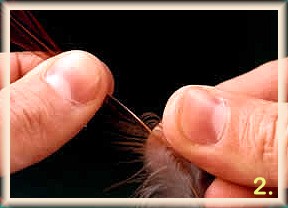
2. By removing all the fibres that cover the same hackle that
supplied me the material for the tails, I gain a clean stem for the
creation of the body.

3. I place the lower extremity of the hackle stem over the two rear
thirds of the hook shank and I stop it with tightened wraps
of thread.
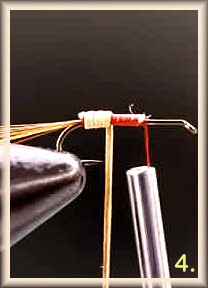
4. Wrapping the stem along the hook portion covered by the
red thread, I now make the abdomen of my imitation.
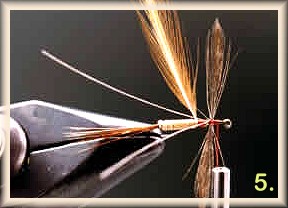
5. From a blue dun neck, I choose the tips of two wide
hackles and I place them over the middle section of the hook
interposed between the eye and the body, giving them a "V"
shape with crossed turns of thread. These wings must be
long, nearly the double of the abdomen. Next, I select, from a
natural red neck, two hackles that have the fibres as
long as the hook shank and I tie them in front of the body.
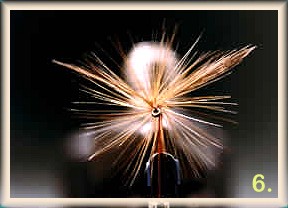
6. Using a hackle plier on each hackle, one after the other,
I wrap the two hackles around the front part of the hook,
passing them behind and in front of the wing structure
to create a fluffy collar.
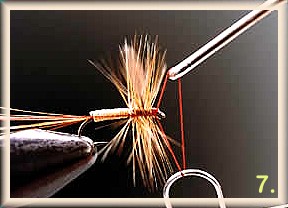
7. Next I cut off the surplus of the hackles and I create the fly head
with some turns of the red thread, which is then finished
with a whip-finish.
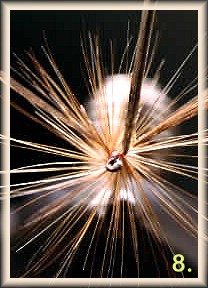
8. A light layer of glue uniformly distributed over the
head will prevent the thread from untying itself, increasing
the resistance of the Lunn's Particular .
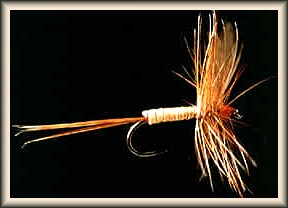
9. My imitation can now be introduced into the fly box, ready
to be used during a summer evening, when I see a good
swarm of reddish Ephemeras on the river surface. ~ Luca
Montanari
Lunn's Particular is one of the 86 flies described in
Luca's recent book entitled Flies - Mosche da pesca.
To get more information about it click
HERE,
or send an e-mail to
libri@edolimpia.it .
Although it's written in Italian, it should be interesting
to many fly tiers due to the many excellent photographs.



